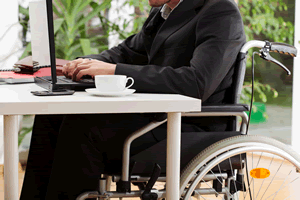Spondylosis and Disability Benefits
In this atricle we will unpack the definition of Spondylosis, and discover what (if any) benefits for this common disability you may be entitled to. There are many common disabilities that have the capacity to change the quality of life you experience, as well as alter (however big or small) your daily routine as you know it.
By definition, Spondylosis is a degenerative disorder of your spine, along with being a form of osteoarthritis. There are three specific types of Spondylosis as defined below:
- Cervical Spondylosis: degeneration in your neck
- Lumbar Spondylosis: degeneration in your lower back
- Thoracic Spondylosis: degeneration in both your upper and mid back
After identifying which of these degenerations you are suffering from, you will want to identify the symptoms and signs. Below you will find a beginning list of such indications, and note here that they can all range from mild to severe in nature and will depend entirely upon you and your specific case.
- morning mid-back stiffness after you get out of bed
- sciatic (mild to intense leg pain)
- pain that radiates, or spreads, into your shoulders, arms, hands, or fingers
- extending and bending your body initiates pain
- low back numbness or tenderness
- shoulder or neck numbness or tenderness
- pain in the mid and upper sections of your back
- pain that decreases after you fininsh exercising or when you rest
- tingling or weakness in your neck, shoulders, arms, hands, or fingers
- difficulty walking
It is very likely that should you, or a loved one, could be suffering from these symptoms and even have other indications of limitations attached to Spondylosis. While suffering from a common disability may be categorized as such, a common disability, your specific case and struggles will be completely unique to you. This may also directly impact your ability to work and successfully have a normal daily routine. From the onset of your concern of being impacted by Spondylosis, it would be in your best interest to retain the services of an experienced and professional lawyer who is well versed in common disabilities, as well as being able to clearly help define your specific case and situation. Generally speaking, the United States Social Security Administration is not known for its sympathy towards those suffering with common disabilities. Ensuring you have a detailed and outlined medical file will be your primary key to ensuring the best possible outcome for receiving benefits. You will need to have medical validation that your ability to work is severely hindered, and you will also need to qualify for Social Security based upon the number of quarters you have effectively worked. It is always best to have confidence in your process, and the unknowns to be seen and understood before they become obsticles. By retaining the services of your attorney, this process is sure to become both managable and successful.
Related Pages
Previous Article
Sacroiliitis and Receiving Disability BenefitsNext Article
Thoracic Outlet Syndrome and Getting DisabilityArticle of the Day
Radial Styloid Tenosynovitis and Disability Benefits
Understanding the common disability of Radial Styloid Tenosynovitis and any related Disability BenefitsCategory: Disability

